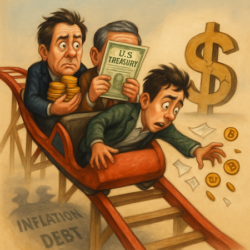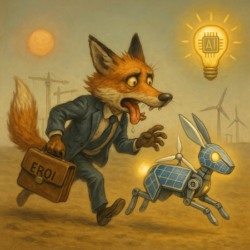In the 1920s, Radio Corporation of America (RCA) was the hottest stock in the world.
Radio was cutting-edge tech, and RCA dominated the sector. The company was the largest manufacturer of radio sets and operated the largest broadcasting company, NBC. They owned key patents and attracted some of the best engineers in the country.
In 1921, RCA shares traded as low as $1.50 (split-adjusted). By 1929, RCA rose to a peak of $549—a staggering 352x return.
At its highs in 1929, RCA was trading at a P/E of 72x. Speculation had driven the price far beyond rational levels.
Then the bubble popped.
By 1932, RCA shares were down to $15. Still a 10x return over 11 years—but most investors had bought in much later, near the top. Margin borrowing had been rampant and only made the crash worse. Sound familiar?
Of course, we saw something similar in the dot-com bubble. Cisco, Intel, and other tech darlings soared to unimaginable heights—then crashed back to Earth.
You could say RCA was the Cisco of the Roaring ‘20s—and possibly the Nvidia of its time.
Is DeepSeek the Pin?
China’s new AI model, DeepSeek R1, may be the pin that pricks the AI bubble. But as of now, it hasn’t happened—yet.
Earlier this year, Nvidia shares dropped sharply as markets reacted to reports that Chinese AI had made serious breakthroughs. For a moment, the bubble looked vulnerable.
But the very next day, Nvidia bounced right back—buyers stepped in.
So, is DeepSeek the catalyst that ends the mania? Maybe. But whether it’s this event or the next, the bubble will eventually burst.
Markets are fragile right now. All it takes is the right catalyst—something big and frightening. A financial crisis, a geopolitical shock, or yes, an AI leap from our primary rival.
Nvidia’s brief 17% drop earlier this year proved one thing: this market is easily spooked.
Profits (and Risks) Concentrated
The AI boom has pushed even more risk into fewer stocks. Long before ChatGPT and GenAI went mainstream, the market was already heavily tilted toward big tech.
Now? It’s extreme.
Anyone holding a broad index like the S&P 500 has more exposure to the Magnificent Seven than they do to the bottom 400 companies combined. These seven tech giants now make up roughly 34% of the entire index.
This is how bubbles behave. A handful of stocks dominate everything.
Yes, this boom is built on real innovation. But every great technological leap—railroads, the internet, crypto—eventually gets out of control.
Veteran investors can spot the signs. The hard part is timing the end. But judging by the volatility we’ve seen in recent weeks, we’re getting closer.
Go Analog to Hedge Digital
If you own a U.S. equity index, chances are you’re heavily exposed to Nvidia, Microsoft, Google, Amazon, and the rest of the Mag 7.
Now is not the time to pile into these names.
Instead, I’d rather go where almost no one is looking: gold, silver, miners, oil & gas, and real estate. The old-world assets.
Hard assets.
Because while tech is booming, the underlying monetary system is crumbling.
The U.S.—along with much of the developed world—is now in debt spiral territory. Once debt-to-GDP crosses 120%, as it recently has in the U.S., history tells us we’re headed for one of two things:
A sovereign debt or monetary crisis
A prolonged era of stagnation and weak growth—poison for stock market returns
AI is powerful. But it can’t defeat math.
That’s why I recommend everyone own at least 10% of their portfolio in hard assets. The easiest place to start?
Gold and silver coins.
They’re portable, private, liquid—and have survived every system reset in history. They remain the ultimate diversifiers.
Best,

Jim Rickards
Contributing Editor, Investor’s Daily
PS. I’ve seen this movie before.
Every tech bubble—whether it was radio in the 1920s, dot-coms in the 2000s, or AI today—follows the same script: soaring valuations, euphoric investors, and a blind spot to the risks building underneath.
But what most British investors don’t realise is this: the real opportunity isn’t inside the bubble. It’s what comes after it bursts.
Right now, a little-known provision buried in U.S. law has been reactivated by the Trump administration. It could unlock an estimated $150 trillion in hidden American wealth and there’s a way non-U.S. investors could benefit, too.
I’ve laid out the full story in my latest briefing, The American Birthright.




